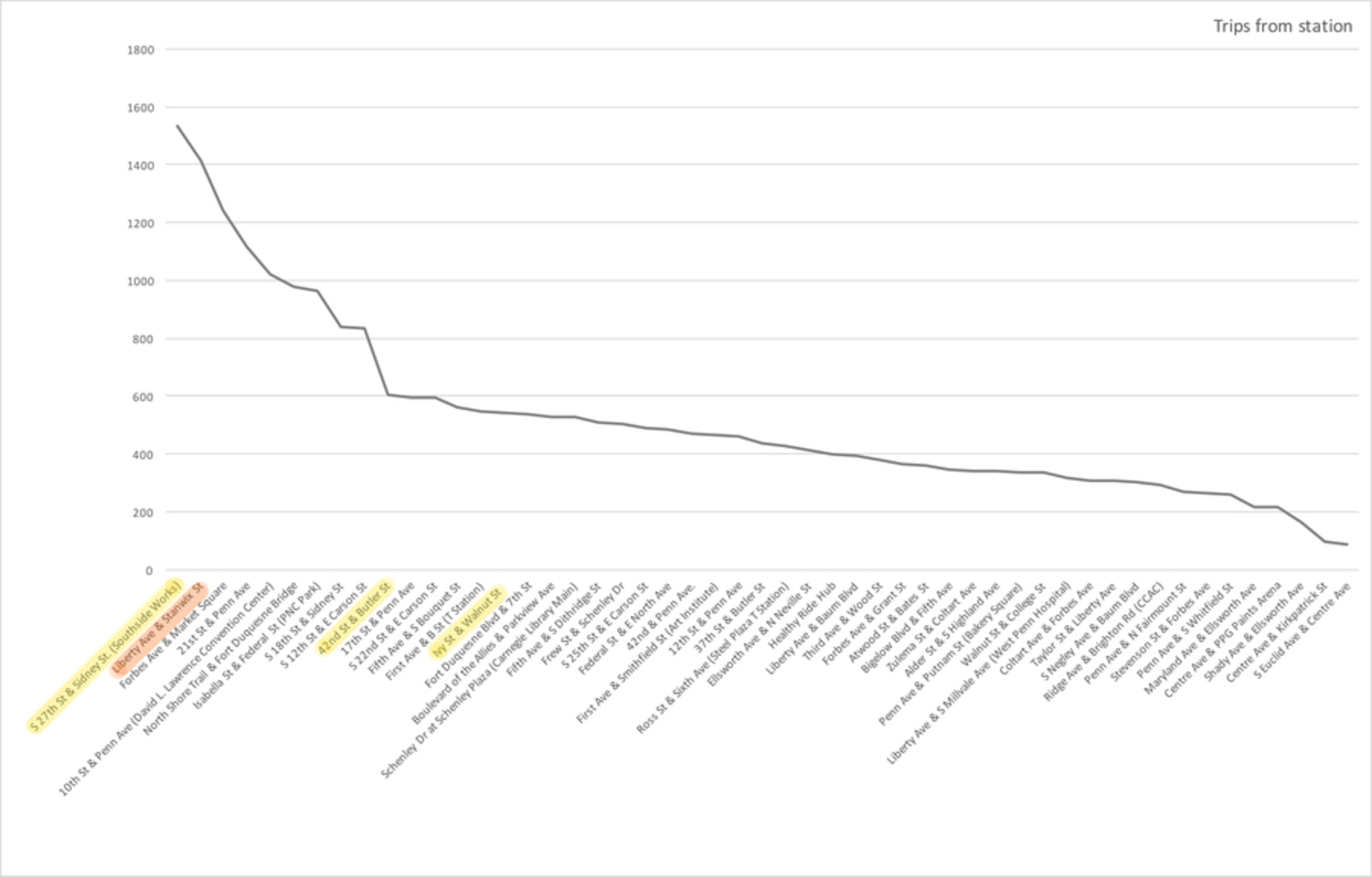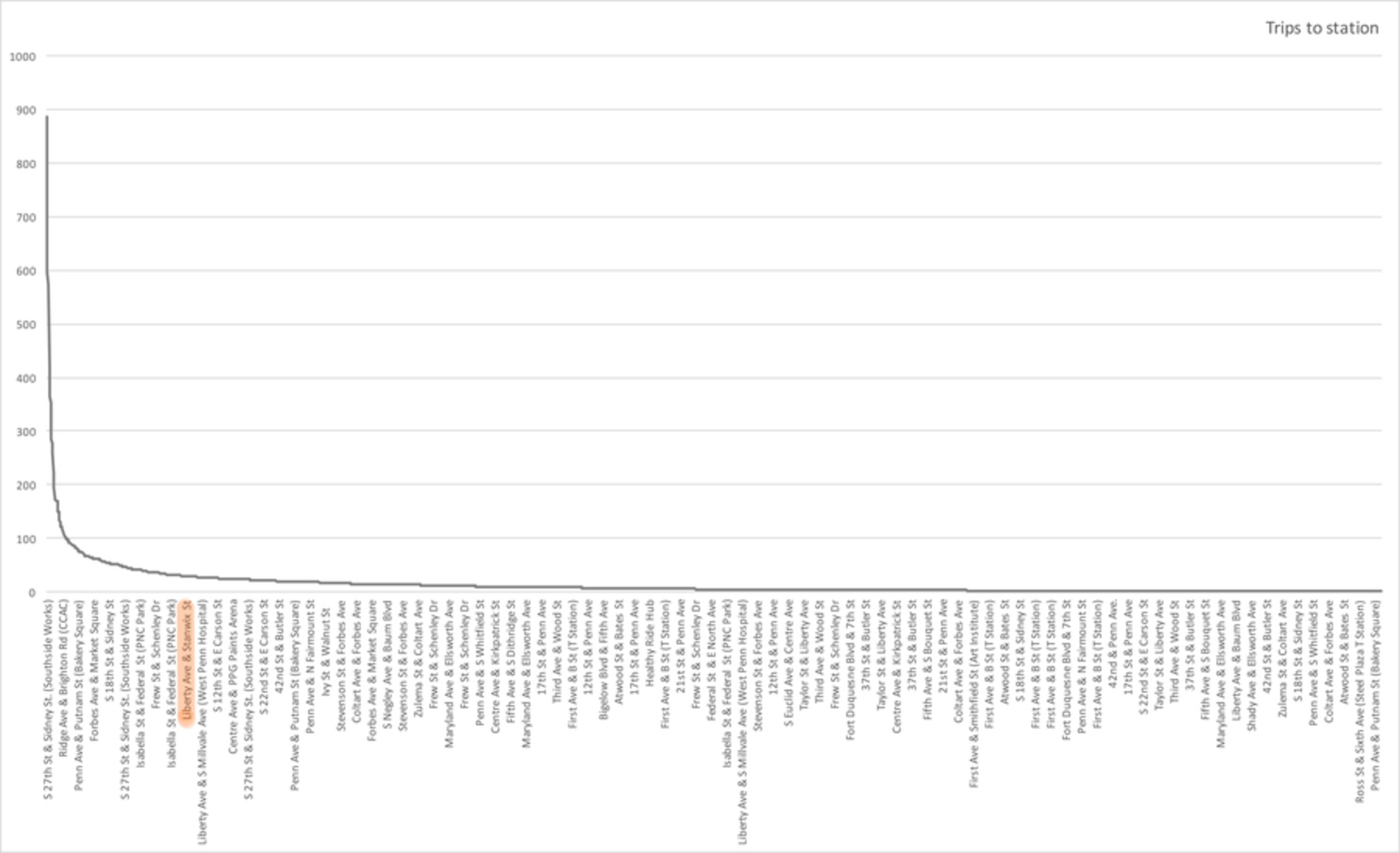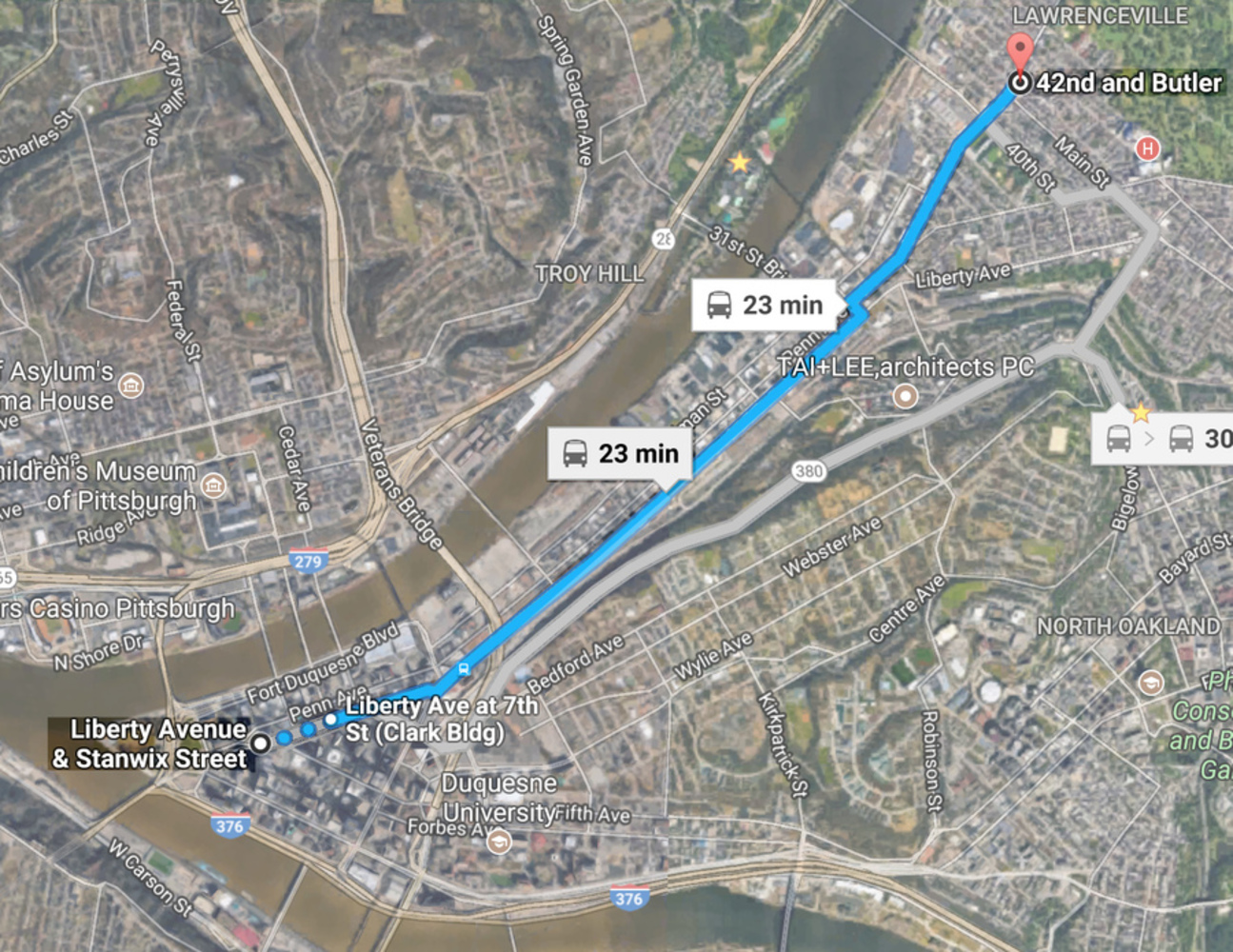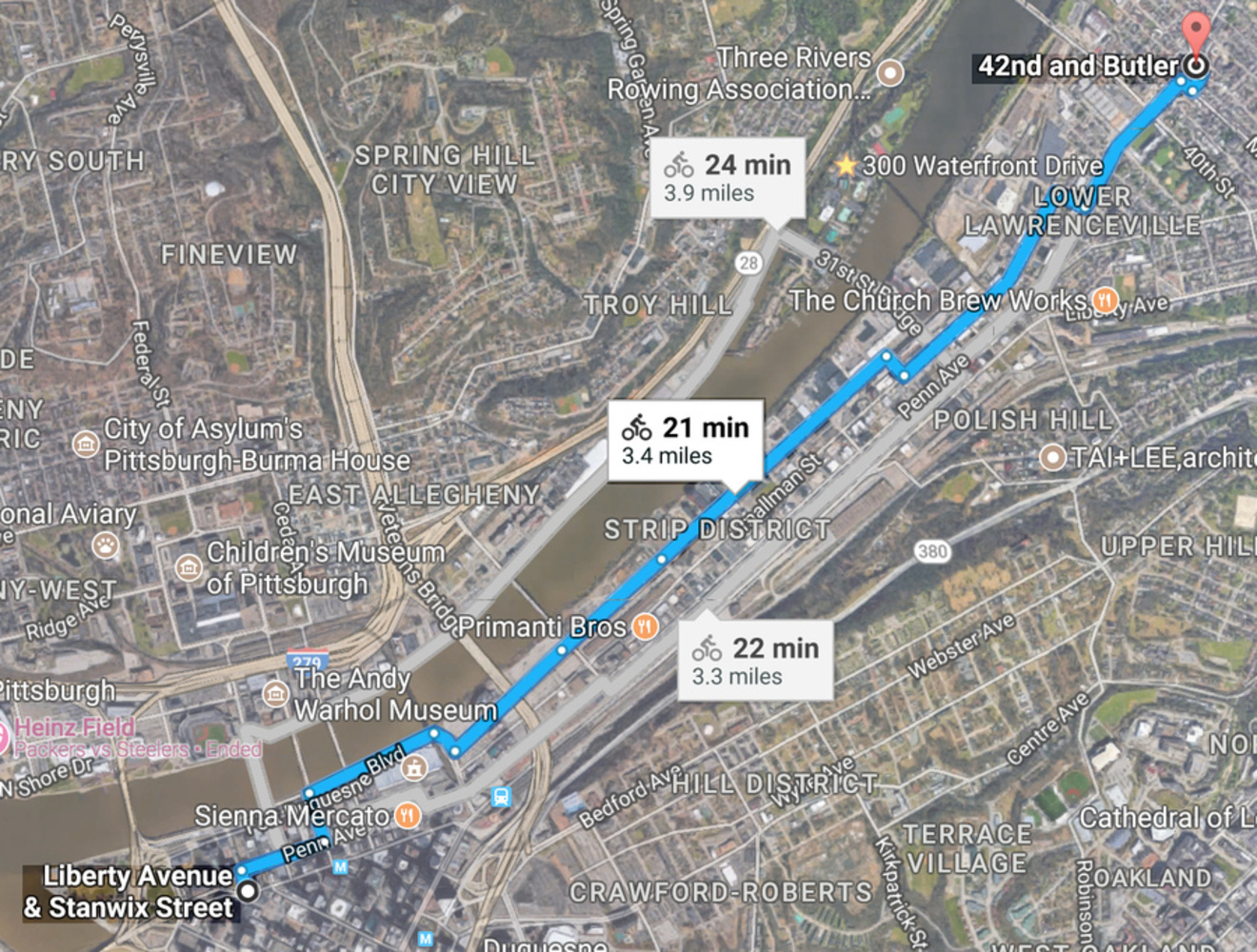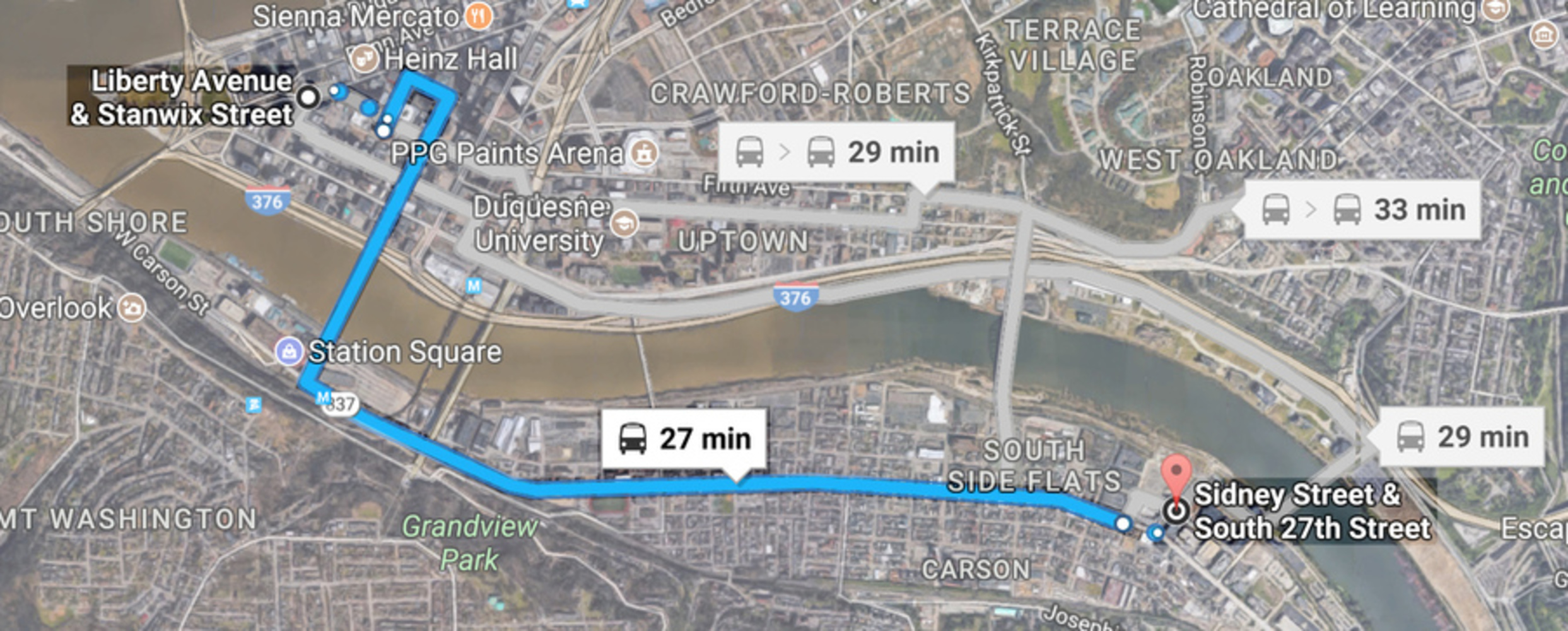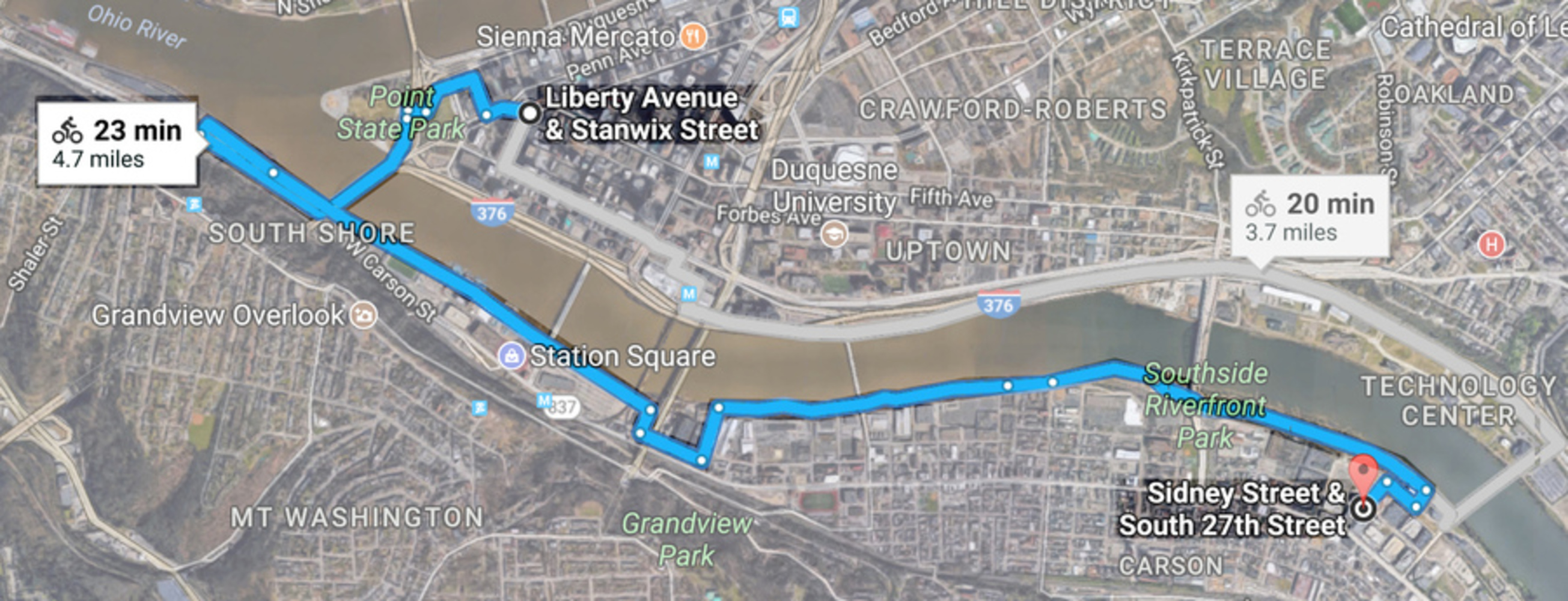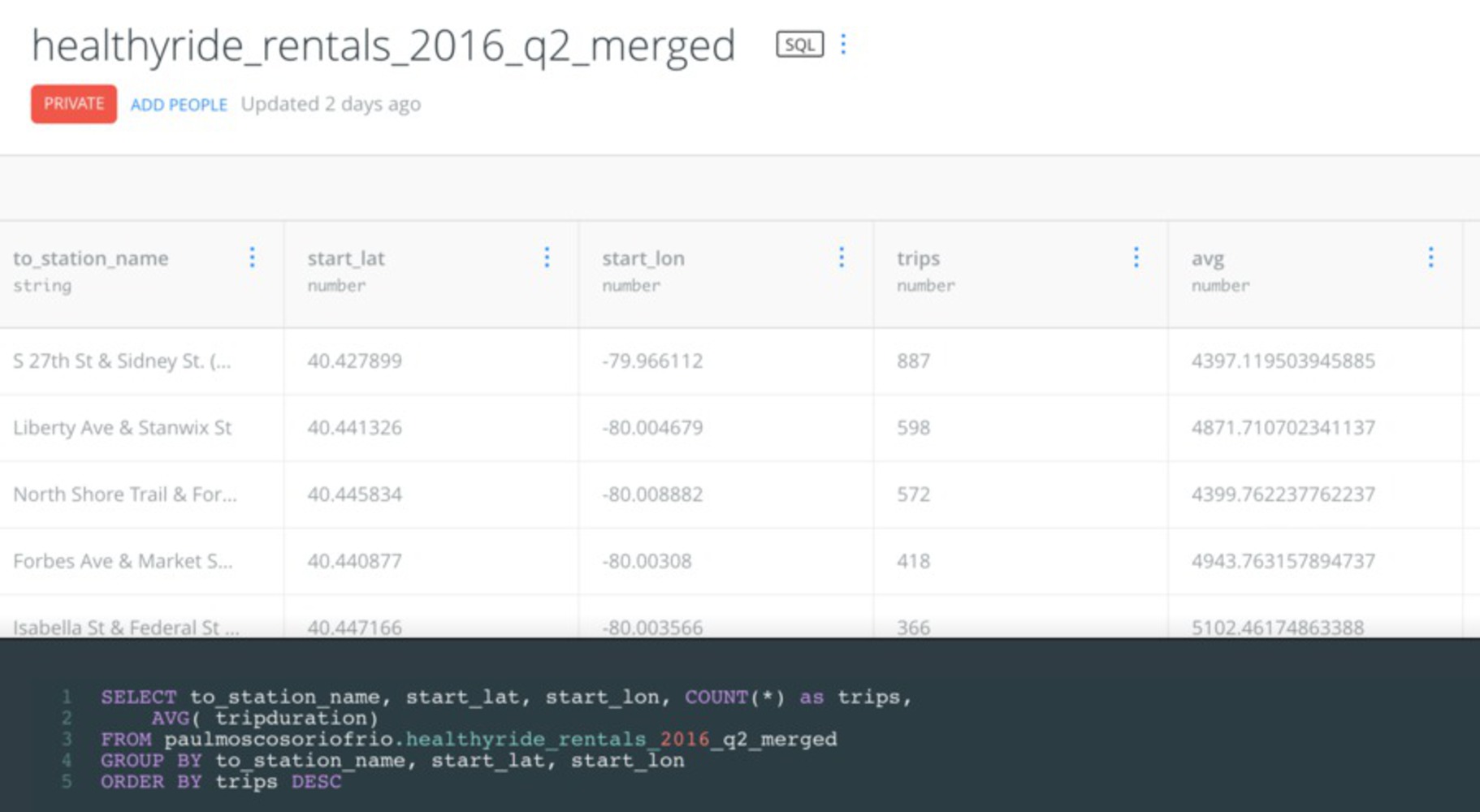Intention
"Pittsburgh has become the first city in the country to offer free bike-share memberships to people who take the train or bus." Molly Hurford, October 2017.
Pittsburgh is a hilly city, crossed by rivers, creeks, and valleys that produce a unique urban landscape, but this characteristic is very hard to move through the city not using a private car. The reasons are because traverse the city on a regular basis becomes a challenging-unmotivating journey even if you are a healthy person. At the same time, many neighborhoods lack reliable transportation options since is costly to maintain bus routes with not enough people using it.
Healthy Ride and the Port Authority of Allegheny County have moved forward to unify their systems and make it user-friendlier between them. There is a program named "Bikes on Transit" that enables bike users to use a bus by mounting their bike in a bike rack located in front of buses. At the same time, Healthy Ride offers 15 minutes free rides to ConnectCard users.
I am curious about the repercussions that a joint effort between the bike sharing operator and the transit agency of the city would have once their systems have become user-friendlier and interconnected. This is a first attempt to understand if open data on bicycles usage can show any pattern or clue about this potential connection already and if so can become a useful tool for police-decision making.
http://www.portauthority.org/paac/RiderServices/BikesonTransit.aspx
https://www.youtube.com/watch?v=gnRX9vv8NXc&feature=youtu.be

